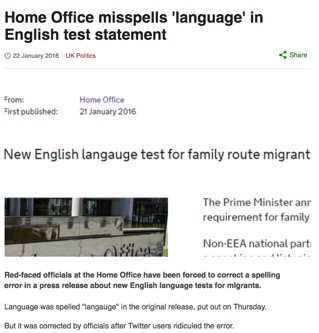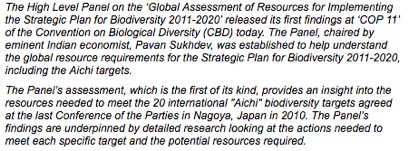As a journalist, you get used to hearing the word ‘no’.
Whether it’s a pesky press officer giving you the ‘no comment’ treatment, a potential interview subject giving you the cold shoulder or a glum news editor giving you a withering assessment of your efforts, you get used to being rebuffed.
It’s perhaps no surprise, then, that journalists themselves won’t be shy about saying ‘no’ when approached by people in PR.
Yet, while you might think a journalist is just being a grumpy so-and-so, there will almost always be a reason for them turning you down.
No journalist can afford to reject a decent story. Newsrooms these days are understaffed and reporters have tough targets to meet in print and on the web. If you can help to ease the pressure by presenting them with something useful, then you’ll be popular.
Journalists are however, by their very nature, cynical and are used to receiving an awful lot of rubbish. A busy newsroom will be sent hundreds of press releases every day. Most of these won’t see the light of day.
So, why not? Here are 14 reasons that could prompt a journalist to say no to you.
(Get this content as a handy checklist by clicking one of the buttons in the blog below.)
1. A lack of photos
Pictures are a crucial part of any story. In fact, no article should be uploaded to a website without some sort of image – hence the rise in stock images. If you don’t send an image with a press release, expect to be asked for one. Failing to produce something could prove costly, especially if the content lends itself to needing a picture of the very thing you’re talking about. If the product or service you’re selling is so good, why wouldn’t you at the very least have a photo of it?
2. Lame ideas
Some press releases are just lame. The worst offenders are those which try to make a contrived link between their client and ‘an event’. Probably the most cringe-worthy example of this are the times in which companies try to cash in on Valentine’s Day. Take a look at this list from BuzzFeed and vow never to follow suit.
3. Incomplete information
You shouldn’t be afraid to field questions about a pitch or press release that you send to a journalist. My colleague John Baker recently wrote for Clickz about the questions that you should be ready to face. Yet, if your press release is full of gaping holes or presents half a story at best then a journalist might well consider it not worth the effort.
4. Information that is too broad
When working in local papers, I used to be particularly puzzled when approached by press officers who hadn’t bothered to take the time to consider whether their information was relevant to the location I was in. You have a patch and you don’t stray beyond that. Funnily enough, when you cover Lincolnshire you couldn’t give two hoots about some new facts and figures about the ‘north east’. Specialist reporters or publications also have their own specific remit and won’t accept material that doesn’t fit this. You don’t want to leave them thinking ‘so what?’. If they do, it’ll be a ‘no’.
5. Claims that cannot be stood up
If you’re going to make a bold claim in your headline then you need to be able to back it up. Don’t invent a stat or fact that you can’t support. It’ll result in an instant ‘no’ and you’ll never be able to establish any trust.
6. Quotes
While pictures are essential to help to illustrate an article, quotes are important to breathe life into the text itself. Too many press releases either miss these out completely or contain the sort of lifeless nonsense that would never actually come out of the mouth of a real human being. Read your quote out aloud – if you sound like a robot saying it then start again. Remember, this is the bit that won’t get changed, it’s your chance to say something memorable and powerful, don’t waste it.
7. Irritating email/phone practice
I had many an email that started ‘Hi. It was great to speak to you just now’ after a ten second conversation in which I merely passed on my contact details. It wasn’t great was it? Yes, be polite and try to get in a journalists’ good books but being irritating won’t help. They won’t be particularly happy to be hassled with a string of phone calls or emails either. Behaving like some sort of stalker isn’t a good look.
As one tech reporter told Digiday: “I’ve had people send 1,000-word DMs out of the blue. It makes me hate the fact that I leave my DMs open. It seems to be common in tech. Also, texting me when I clearly haven’t responded to email or phone. I’m not your boyfriend, so don’t text me.”
Half way there! Download the full checklist right now by clicking below:
8. Bad timing
On that point, you also need to be careful with your timing. If it’s press day and you’re up against the clock, the very last thing you want to do is drop everything and talk about a press release. If you get to know a journalist well then you’ll know when not to bother them. Otherwise it’s a guaranteed ‘no’. Writing for Ad Week’s ‘PR Newser’, Angus Wood found this to be the number one PR mistake that journalists hate.
9. Poor spelling
Bad typos live longer in the memory than the press releases they are contained within. In fact, the worst risk becoming the story themselves. Take a look at the BBC’s article on a Home Office press release sent out earlier this year. It’s not a great idea to promote an English language test by spelling ‘language’ wrong. Typos can be corrected, but making several big howlers – particularly on the key words within your release – will put you on the path to a big ‘no’.

10. Confused message
What are you actually trying to say? During my journalism training we spent an awful lot of time practising writing just the intro of a news story. Often with an unusually angry Scotsman peering over our shoulder (it worked). A reporter has to sum up their whole story in one paragraph to try to capture the attention of a reader. They’ll have this in mind when looking at a press release or pitch. What IS the story? How would I sum it up briefly to run it past a news editor? Convoluted messages that try to cover several angles risk confusing a journalist. If they don’t understand what it is that you’re trying to get across then they won’t be able to convey that to anyone else and it’ll be a ‘no’ from them.
11. Misunderstood tone
Do you think it’s a good idea to try to be funny? Unless you’re very good, I wouldn’t bother. Everyone’s idea of humour is different and if yours fall flat then it’s unlikely that the journalist will hover for long over the delete button before giving it a firm click. Being too informal can also put people off. It’s a case of knowing your audience. If you know a journalist or you’re on the right topic you can be a little lighter, but this should be the exception and never the rule.
12. Excessive jargon
One sure fire way to get the tone wrong and your message confused is to stuff a press release full of jargon. The Mail’s Tim Shipman flagged up a particular pungent example of a poor release from the Department for Environment, Food and Rural Affairs (Defra).
Passages include this gem:

13. Already covered
It’s impossible to know about every story that a journalist has covered, but spending five minutes on Google should show you if they’ve gone over exactly the same ground already. Journalists will say ‘no’ if you’re offering them nothing new on a topic they’ve already ‘done’.
14. Poor reputation
It’s easy to make a bad name for yourself. By falling foul of some of the above problems, you could earn a bad reputation with a journalist. By doing that you could even find yourself hearing ‘no’ before you even get chance to explain what you’re offering. Most journalists will probably know of one or two people that always email them and never provide anything worth using. Don’t be that person.
Want some help to avoid these errors? We’ve prepared a handy checklist of questions that you should ask yourself before approaching a journalist. By asking and answering each of these you’ll greatly enhance the chances of you eliciting a ‘yes’ next time you make an approach.
Sign up for our monthly newsletter and follow us on social media for the latest news.





 Proudly part of IPG Mediabrands
Proudly part of IPG Mediabrands